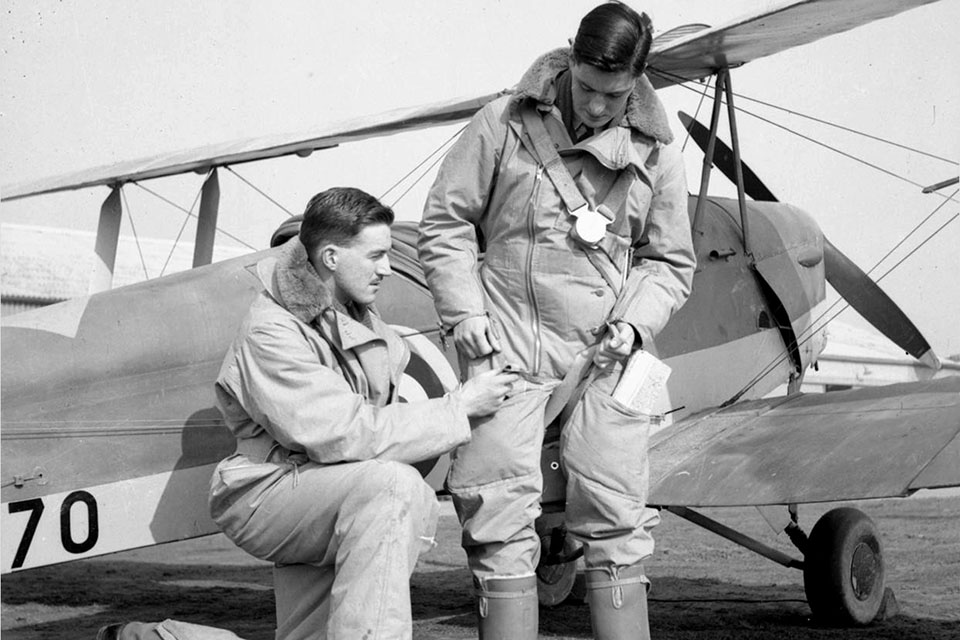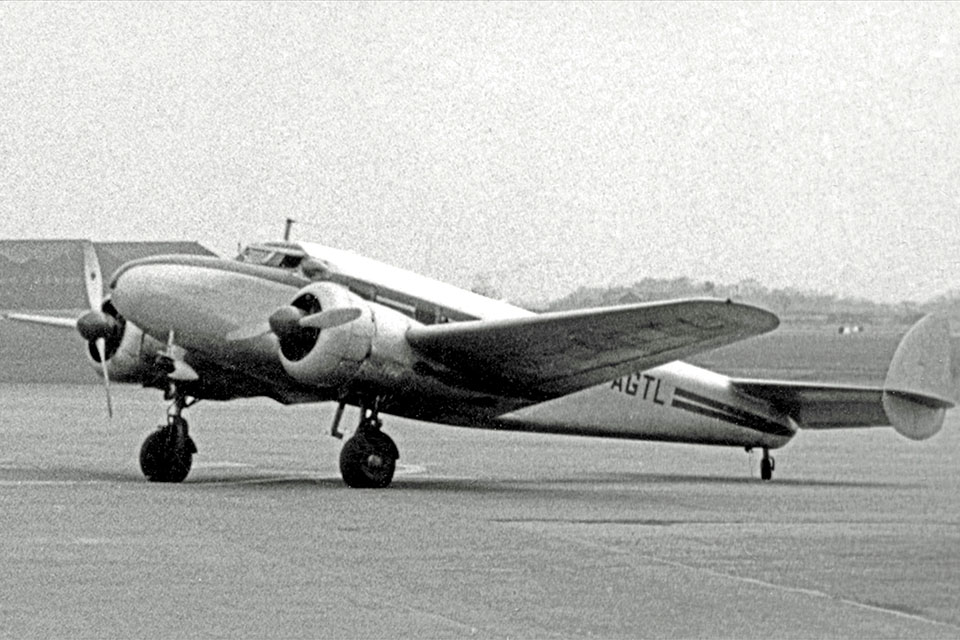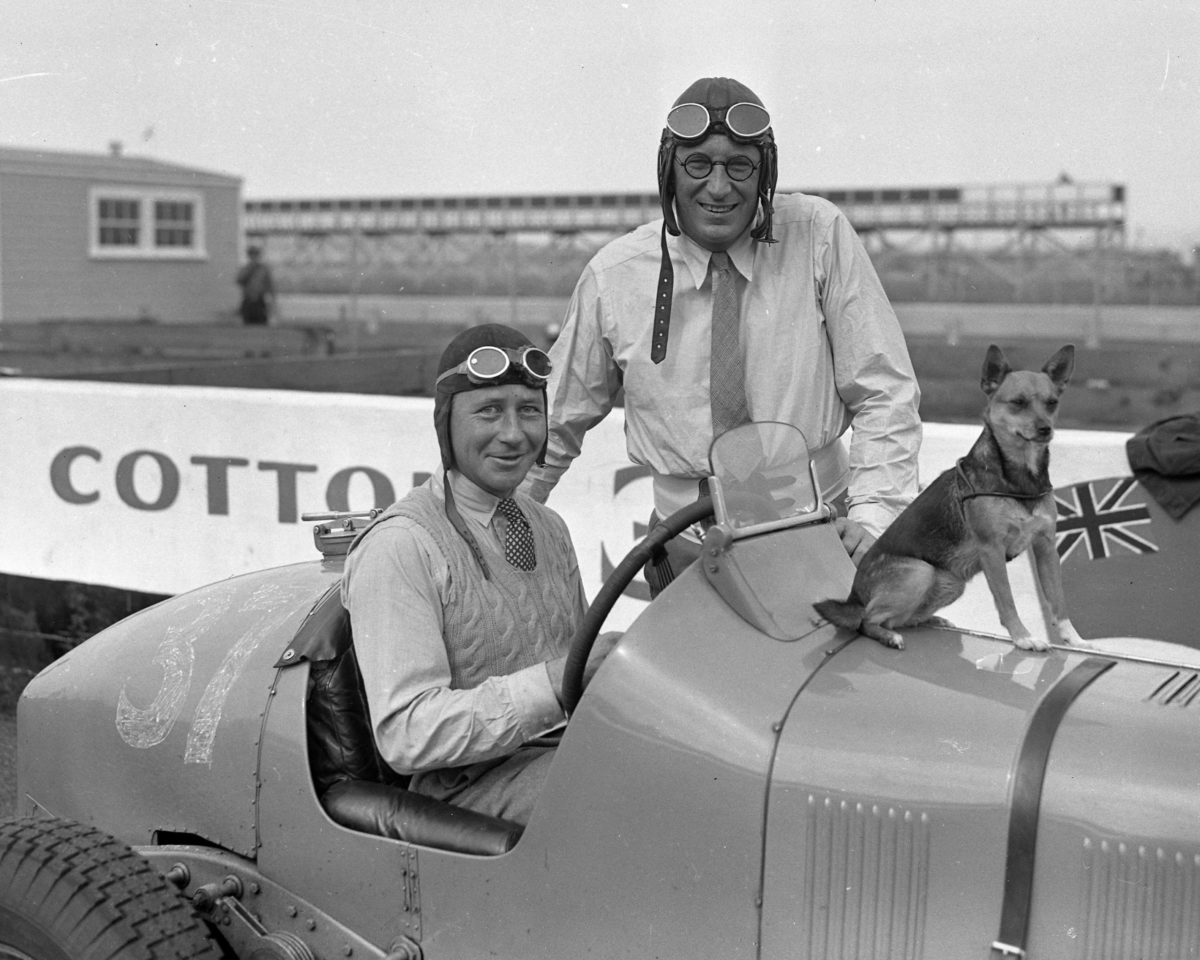Generations of Blue Angels and Thunderbirds owe their ability to stroll airshow ramps in smart, sexy flight suits to a wealthy, irascible Australian World War I pilot named Sidney Cotton. For Sid Cotton invented the flight suit in 1917. He named it the Sidcot, and it soon became standard for British Royal Flying Corps and Naval Air Service pilots. It’s said that “Red Baron” Manfred von Richthofen was wearing a Sidcot when he was shot down, though there’s no word on whether he bought it or copped it from a Brit victim.
Cotton’s flight suit was quite different than the modern-day military pilot’s tight jumpers, but it was a considerable advance over the standard aviator’s garb of the day, which was simply whatever overcoat or leather jacket was at hand, thrown over one’s uniform. Cotton designed a warm, single-piece coverall lined with fur under a layer of silk. It had pockets on the thighs for maps and papers, and eventually lots more pockets, lots more zippers. If you wanted people to know you were a pilot, you wore a Sidcot.

But Cotton’s real contribution to military aviation was that he also developed modern aerial photoreconnaissance, although the Royal Air Force couldn’t get rid of him fast enough. Cotton was outspoken, had little regard for rank, and was rich and smart—everything a military officer loathed.
During the 1920s and ’30s, Cotton speculated in stocks and real estate, made headlines by air-rescuing a team of explorers stranded on the Greenland ice sheet and flew missions following migrating seals for Newfoundland fisheries. He also got involved in aerial photomapping in Newfoundland and learned of a new color film called Dufaycolor, marketed to the motion-picture industry by a British company. Cotton became a Dufaycolor sales manager and flew throughout Europe pitching the film.
In 1938 Britain’s Secret Intelligence Service became aware that businessman Cotton was flying daily over German sites the RAF wished it could visit. So Cotton quietly joined the SIS and got the agency to buy a Lockheed 12A Electra Junior—big enough to carry several cameras but ordinary enough to not attract attention. Starting in February 1939, Cotton flew “business trips” over France’s Maginot Line and nearby German positions.
French military intelligence controlled the flights and supplied the cameras. Flying with French cameras over the hither-and-yon patterns the French specified resulted in poor photos. Cotton came up with new flight paths and installed better RAF cameras, one pointing down and two shooting obliquely, but the French nixed the idea. Cotton quit the project, saying, “If worthwhile results were to be obtained, I must have my own aircraft and operate in my own way.”
Sid went back to Germany with his Electra, again posing as a Dufaycolor salesman. During the last weeks before the war began, he shot thousands of photos of everything from the Siegfried Line to the German fleet at Wilhelmshaven. He cut it close: His Electra was the last civilian aircraft to leave Germany before the Wehrmacht invaded Poland.
Cotton fabricated two simple innovations that benefitted aerial photography. He ducted hot air from an engine exhaust muff to warm the camera lenses, keeping them free of condensation. And he created cockpit side windows with big blisters, so the pilot no longer had to bank to identify what he needed to photograph directly below.
Cotton’s real contribution, however, was a total rethink of aerial photography methodology. When he returned to England, the RAF was using Bristol Blenheims and Westland Lysanders for photo flights, the theory being that one wanted to get reasonably close to the area being photographed—10,000 feet was optimal—and to fly over it slowly enough that the film could capture high-resolution images. The Lysanders were at least maneuverable enough to get away from Messerschmitts, but the outmoded Blenheims suffered dreadful losses.

To the dismay of many entrenched RAF officers, Cotton formed what came to be known as Sid Cotton’s Air Force. Sid flew photorecon using the fastest aircraft available at the time—gunless Supermarine Spitfires lightened to fly at 30,000 feet, where they would survive on speed. But the RAF said the details in his images were too small to be of any help to photo interpreters.
Cotton consulted a friend from his Newfoundland photomapping days, Harold Hemming, who had formed the Aircraft Operating Company, a pioneer in photomapping for oil- and mineral-prospecting operations during the 1930s. AOC had a stereoscopic photo-viewing system—a multi-ton Swiss machine called a stereo plotter—that extracted considerably greater detail from Cotton’s six-mile-high photos. It became the heart of the process called photogrammetry, which allowed photo interpreters to see details down to the size of barbed wire fortifications.
In May 1940, a Spitfire from Cotton’s unit photographed from 30,000 feet 400 German tanks parked under trees and other camouflage, preparing to break west through the Ardennes forest. The RAF ignored the warning signs. The Germans invaded the Low Countries and France only days later with those very same tanks.
Cotton’s little squadron—four Spitfires and the faithful Electra—was originally based at a civilian airfield, Heston, and was considered to be an experimental unit free of the RAF’s formal structure. It was called Heston Flight and Cotton was given the acting rank of wing commander.
During the first four months of the war, the RAF had photographed 2,500 square miles of Europe at the cost of 40 airplanes, many of them Blenheims. Heston Flight’s high-altitude Spitfires had surveyed 5,000 square miles without a single loss. Cotton’s air force briefly operated from France, but the speed of the German advance sent Heston Flight fleeing back to England. When he landed back at Heston in the Electra, Cotton was informed that his unit was now a full-blown part of the RAF and his services were no longer required.
In his excellent book Spies in the Sky, Taylor Downing wrote that “Cotton laid the foundations for…photo reconnaissance and photo interpretation. This was a huge achievement. But he was absolutely not the right person to lead a military unit in war. The eccentricities that enabled him to rattle the cage of the RAF during the phony war were the very characteristics that made him unsuitable to command….The Air Ministry had been absolutely right to dump him after the Battle of France.”
This feature originally appeared in the March 2022 issue of Aviation History. Don’t miss an issue, subscribe!





